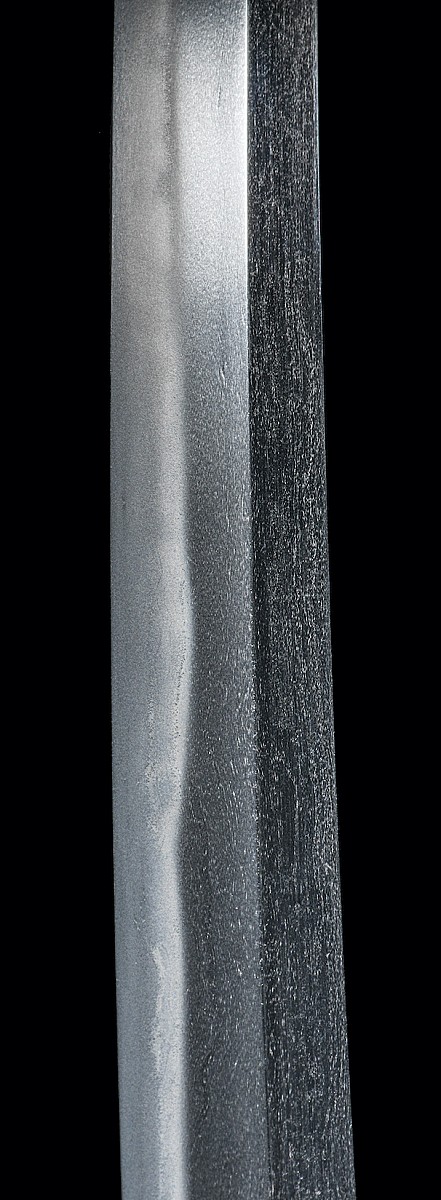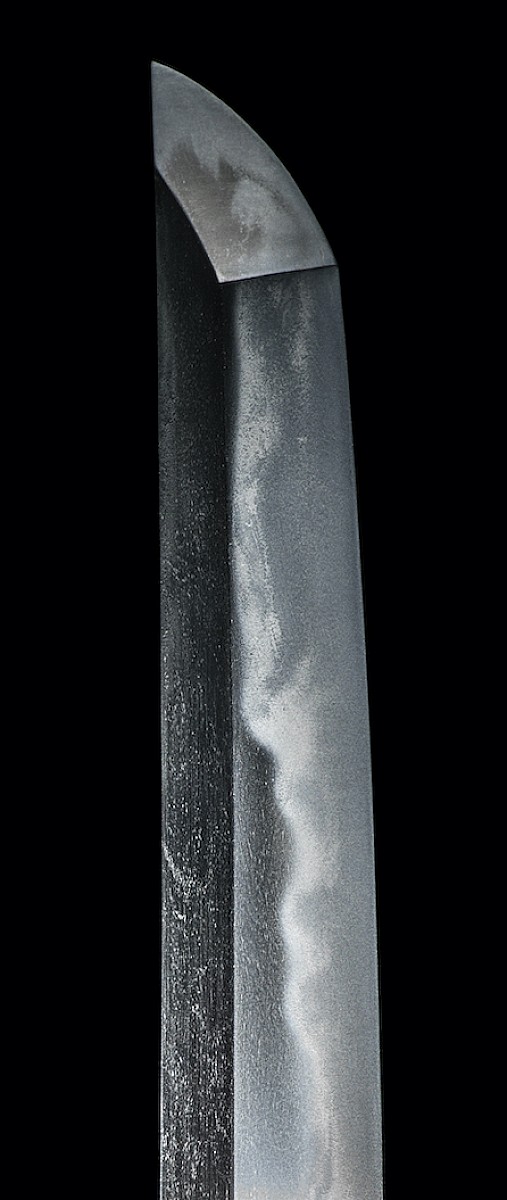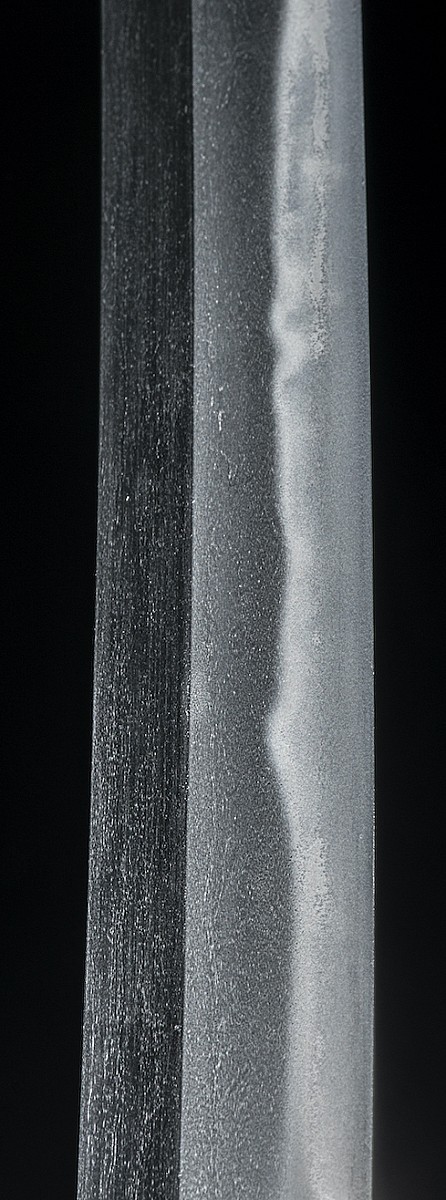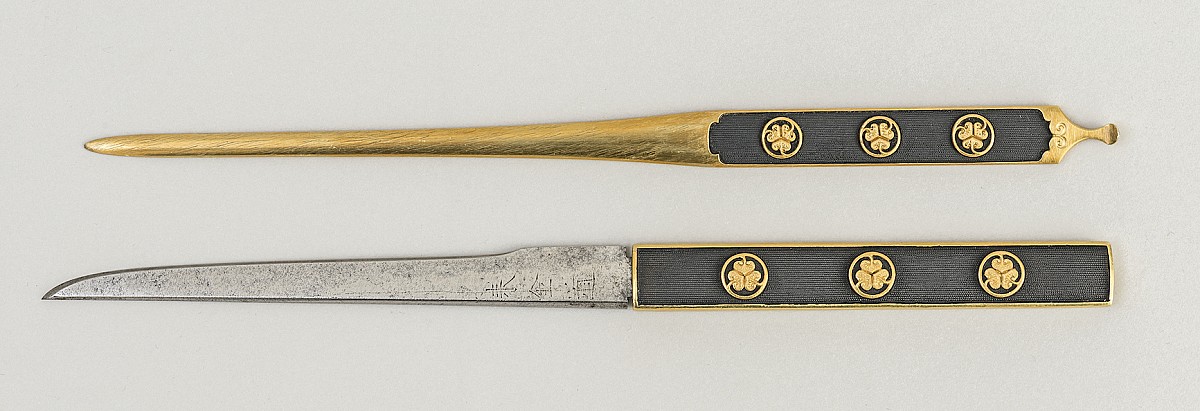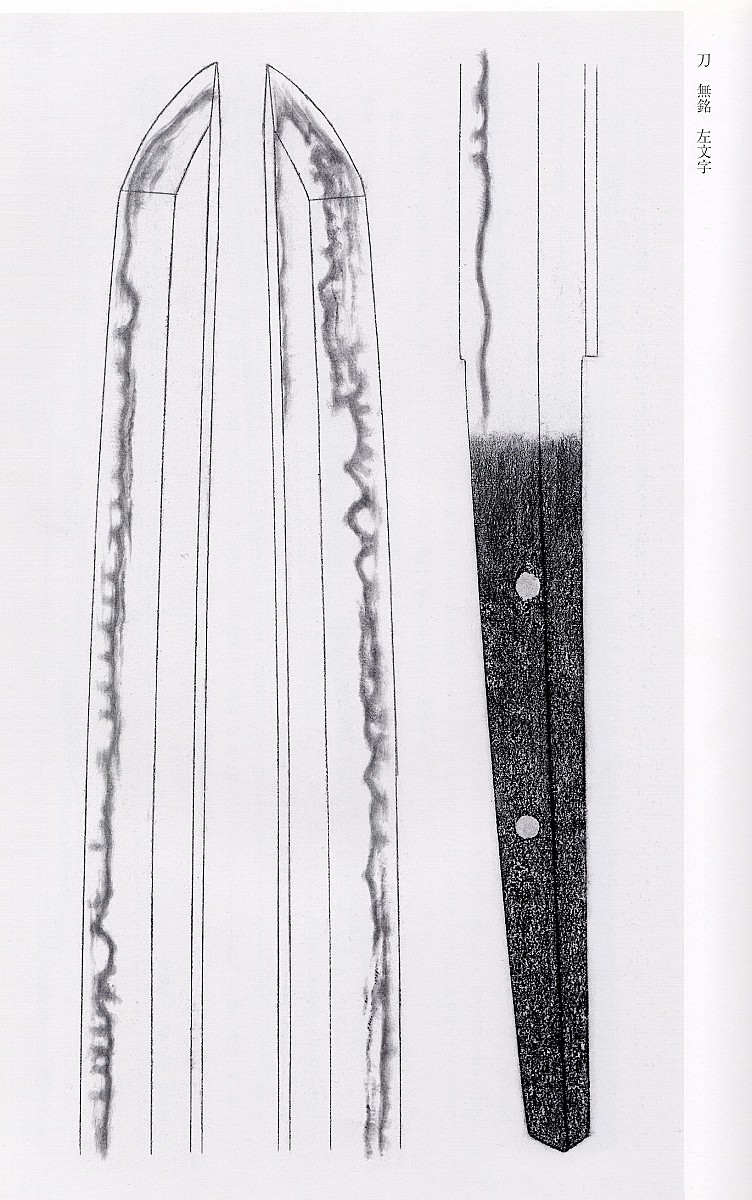Samonji (左文字), Ryakuō (暦応, 1338-1342), Chikuzen province, born civilian name Minamoto Saemon Saburō (源左衛門三郎), and the priest name Keigen (慶源). Samonji was a son of Jitsu ́a (実阿), has nicknames Ō-Sa (大左) and Samonji (左文字), he lived in Ikihama (隠岐浜) and is traditionally listed as one of the Masamune no Jittetsu. Saikaidō (西海道), saijō-saku.
Tokubetsu Jūyō Tōken Samonji Katana: nagasa: 69.55 сm; sori: 1.8 cm; motohaba: 2.9 сm; sakihaba: 2.05 cm; motokasane: 0.65 cm; kissaki nagasa: 3.05 cm; nakago nagasa: 18.4 cm. This sword is shortened, without a signature, is attributed to “Samonji”; a family heirloom of the Date clan (伊達), estimated at 700 kan in 1689 by the Hon’ami appraiser (no origami extant), on the 12th day of the 7th month of the 3rd year of Genroku (1690), was given by 5th shōgun Tokugawa Tsunayoshi (徳川綱吉, 1646–1709), to Date Tsunamura (伊達綱村, 1659–1719), who was the 4th daimyō of the Date clan. Provenance: Tokugawa Tsunayoshi, Date Tsunamura, and Sugawara Jun’ichirō (菅原潤一郎).
Designated as Tokubetsu Jūyō Tōken at the 17th tokubetsu-jūyō-shinsa held on the 24th of April 2002.
Publications: NBTHK Jūyō Tōken Nado Zufu, Volume 47; NBTHK Tokubetsu Jūyō Tōken Nado Zufu, Volume 17; Date Ke family heirloom catalogue: Kensō Hiroku (劔槍秘録), 1980, No. 42, p. 46; Kōshitsu, Shōgun-Ke, Daimyō-Ke Tōken Mokuroku (皇室・将軍家・大名家刀剣目録), 1997, No. 41, p. 214; Dai Tōken Ichi catalogue, 2013, No. 125, p. 104; Lord Jōkei Chronicles (English version), p. 80.
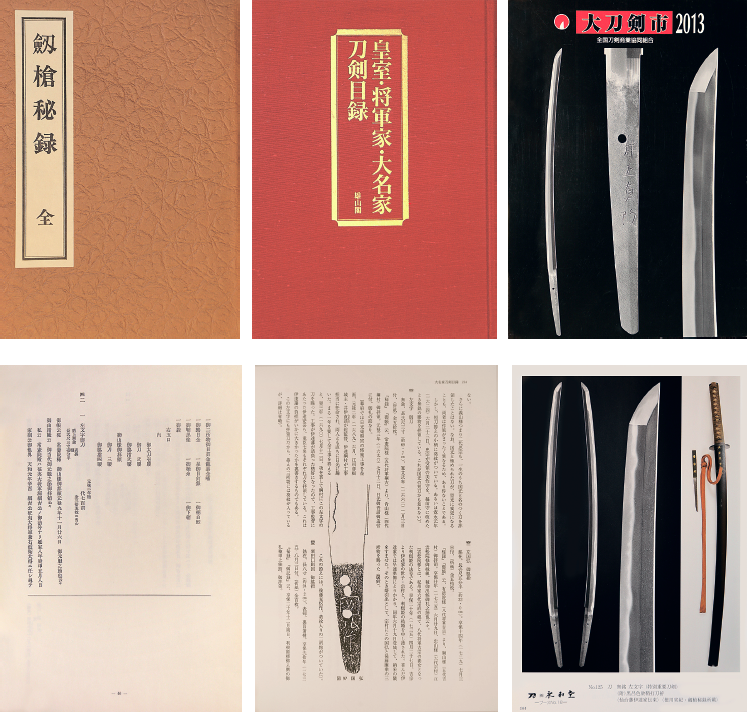
Figure 1: Date Ke family heirloom catalogue: Kensō Hiroku (劔槍秘録); Kōshitsu, Shōgun-Ke, Daimyō-Ke Tōken Mokuroku; Dai Tōken Ichi catalogue, 2013.
The sword by Samonji presented here is not only an example of the highest-quality forging and smithing artistry, but also displays an exceptional degree of blade preservation. The sword looks like a masterpiece, as though it left the smith’s workshop yesterday. However, we should note that we couldn’t really expect otherwise regarding a sword that was originally kept in the collection of a daimyō, especially one as illustrious as the Date clan, and that at a certain time held a very important position. Such collections usually consisted of only the highest-quality items, and the standards for their storage and care were among the best.
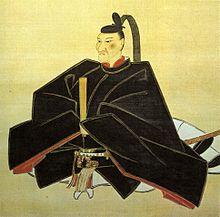
Date Tsunamura (1659-1719).
As mentioned previously, the Date clan received this sword as a gift directly from the shōgun Tokugawa Tsunayoshi. This was reflected in old chronicles. In particular, Albert Yamanaka, in “Tokugawa Jikki” (Albert Yamanaka’s Nihontō Newsletter, Volume 4, p. 314, San Francisco, 1994–2004), indicates the following:
"On July 12, 1690 Ii Kamon no Kami Naotsugu for the supervision of construction works in Nikkō Shrine [Nikkō Tōshōgū] received a Rai Kunitoshi katana as a gift;
- Matsudaira Mutsu no Kami Tsunamura [Date] for providing a labor force for construction [Nikkō Shrine] received a Samonji katana as a gift;
- On July 13, 1690, vassals of Matsudaira Mitsu no Kami Tsunamura for participating in the supervision of the construction of Nikkō Shrine received the following gifts:
- Date Aki: a Yukimitsu wakizashi,
- Daijō Kenmotsu: a Sue Sa katana,
- Endō Takewaki: a Kunitoshi katana,
- Wada Oribe: a Mihara katana,
- Satō Moku: a Sadakiyo katana,
- Nakaji Yugei: a Shigezane katana,
- Tangi Shume: a Yoshiie katana,
- In addition, everyone received a set of clothes."
When checking the above data on the official list of family heirlooms of the Date clan (Date Ke family heirloom catalogue: Kensō Hiroku), on page 46, we can find the following description of the same event, made by chroniclers from the Date clan:
Tokugawa Tsunayoshi (the 5th shōgun) awarded Date Tsunamura with this Samonji sword on July 12, 1690 for the construction of the Nikkō Shrine [Tokugawa Ieyasu burial vault]. Date Tsunamura together with Ii Naotsuga worked on the construction of Nikkō Shrine throughout the year and this work was very difficult. Also, swords were donated to all the seven vassals of Date Tsunamura who took part in the construction.
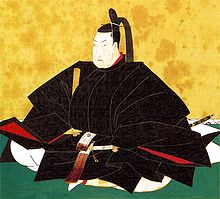
Tokugawa Tsunayoshi (1646–1709).
Thus, on the basis of extant documents, it is possible to definitely confirm the provenance of the sword represented here. This case is very rare. For a long time, the sword remained the family heritage of the clan and did not change owners. Only three owners of this sword can be named since the end of the 17th century. In this case, the sword’s origin did not raise any doubts among NBTHK experts, who pointed it out consistently in the documents of Jūyō and Tokubetsu Jūyō. However, even without this confirmation, extant records in the clan chronicles unequivocally identify this sword as Samonji’s and link its attribution to the described historical events. In addition, we should note that of all the 64 swords from the family heirloom list of the main line of the Date clan, only 35 items have survived.
<.....> This “Tokubetsu Jūyō Samonji” provides a rare chance for us to study the master’s works and the features of the Sagami School’s development. The sword’s extremely high degree of preservation, as is typical with objects coming directly from a daimyō’s collection, only helps in this process.
(excerpt from Chapter 12, pp. 296-309, of the Japanese Swords: Sōshū-den Masterpieces )
Original content Copyright © 2019 Dmitry Pechalov

